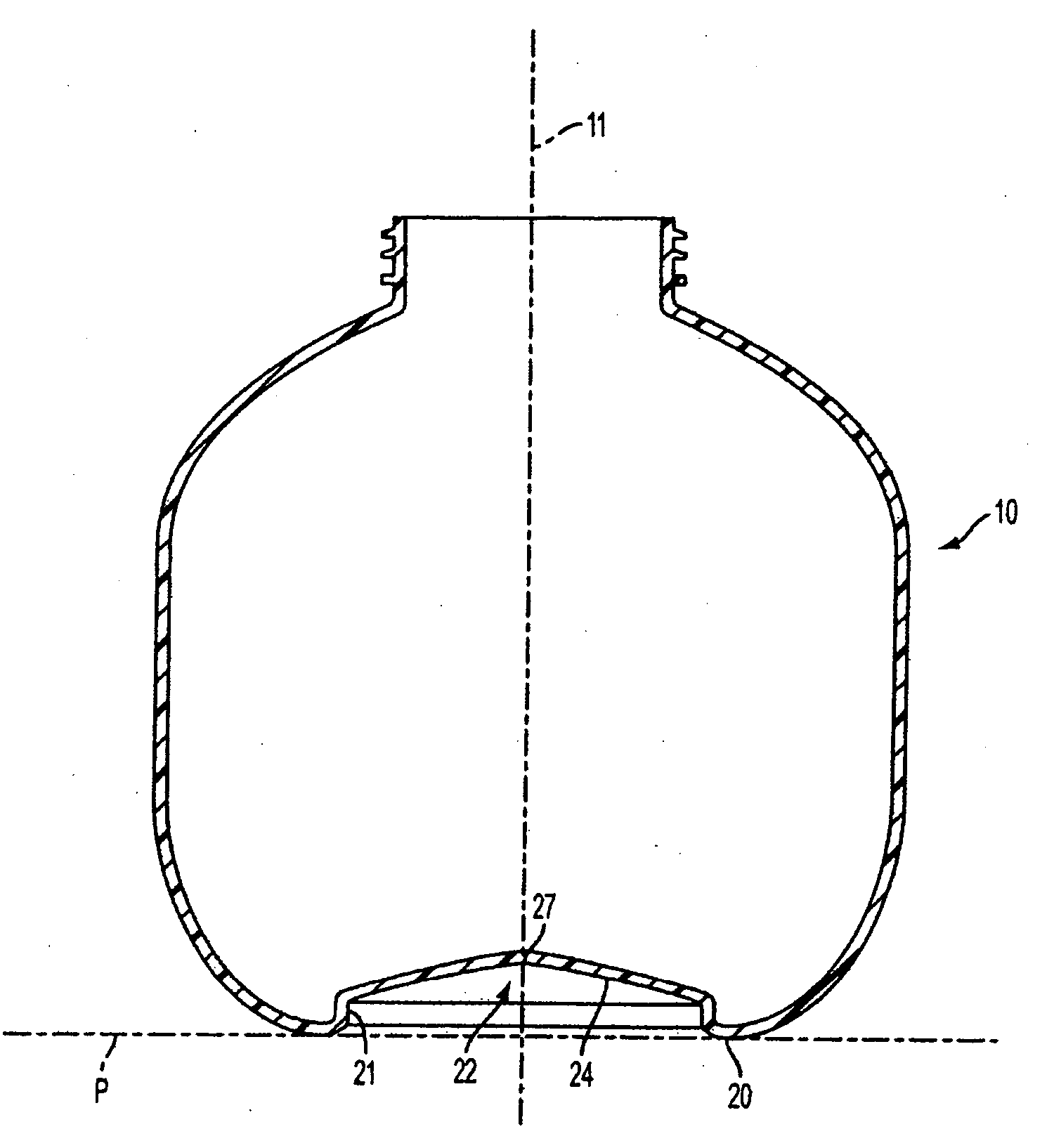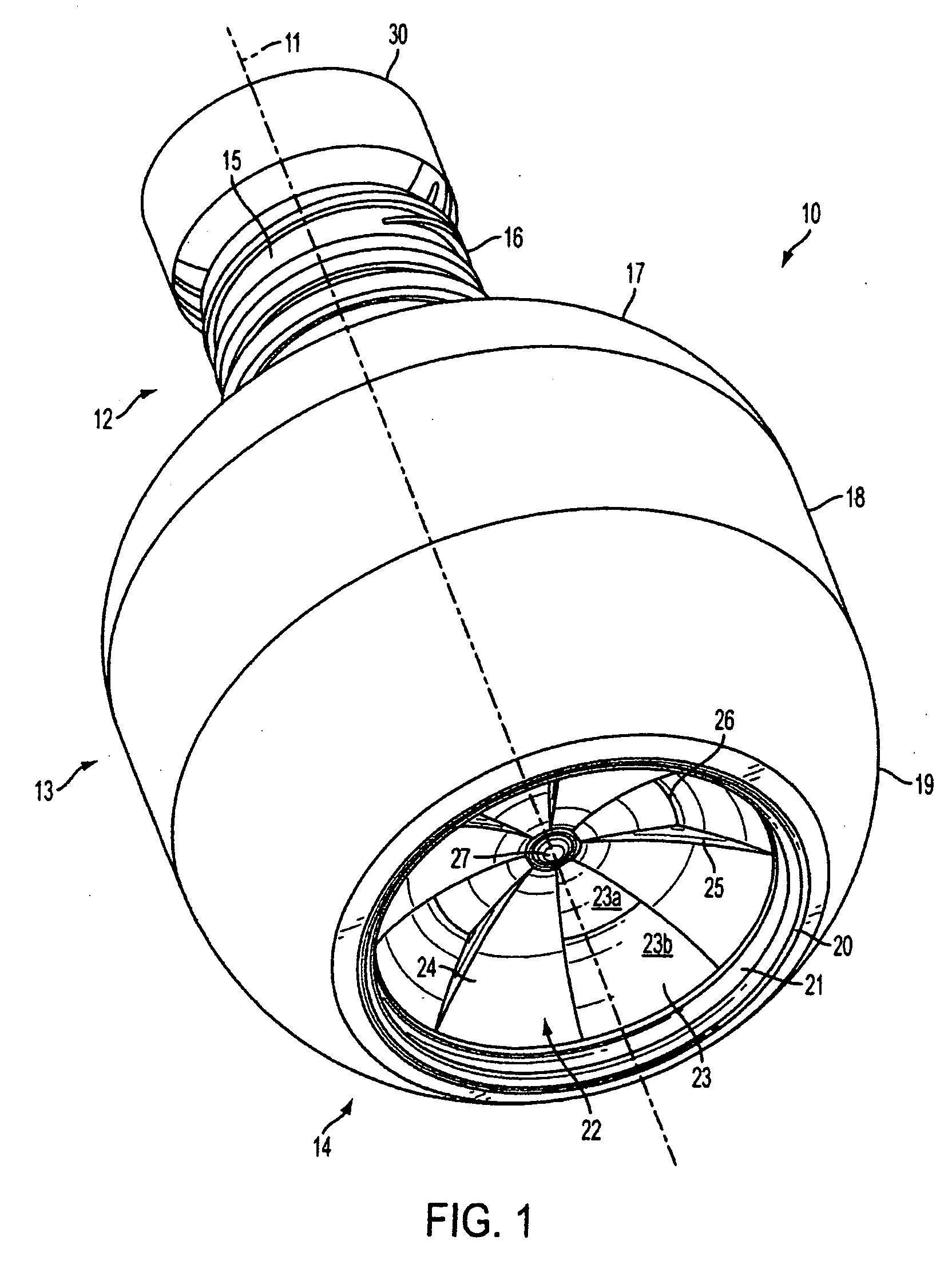Plastic container base structure and method for hot filling a plastic container
a plastic container and container base technology, applied in the field of plastic containers, can solve the problems of weak portions in the container walls, partial vacuum within the container, and containers that tend to deform and/or collapse, and achieve the effect of decreasing the thickness of the material
- Summary
- Abstract
- Description
- Claims
- Application Information
AI Technical Summary
Benefits of technology
Problems solved by technology
Method used
Image
Examples
Embodiment Construction
[0030] Exemplary embodiments of the invention are discussed in detail below. In describing embodiments, specific terminology is employed for the sake of clarity. However, the invention is not intended to be limited to the specific terminology so selected. While specific exemplary embodiments are discussed, it should be understood that this is done for illustration purposes only. A person skilled in the relevant art will recognize that other components and configurations can be used without departing from the spirit and scope of the invention. All references cited herein are incorporated by reference as if each had been individually incorporated.
[0031]FIGS. 1 and 2 are perspective and bottom views, respectively, of a plastic container 10 according to an exemplary embodiment of the present invention. The container 10 is generally symmetrical around a longitudinal axis 11 and includes a neck portion 12, a body portion 13, and a base portion 14, together forming a substantially enclose...
PUM
 Login to View More
Login to View More Abstract
Description
Claims
Application Information
 Login to View More
Login to View More - R&D
- Intellectual Property
- Life Sciences
- Materials
- Tech Scout
- Unparalleled Data Quality
- Higher Quality Content
- 60% Fewer Hallucinations
Browse by: Latest US Patents, China's latest patents, Technical Efficacy Thesaurus, Application Domain, Technology Topic, Popular Technical Reports.
© 2025 PatSnap. All rights reserved.Legal|Privacy policy|Modern Slavery Act Transparency Statement|Sitemap|About US| Contact US: help@patsnap.com



